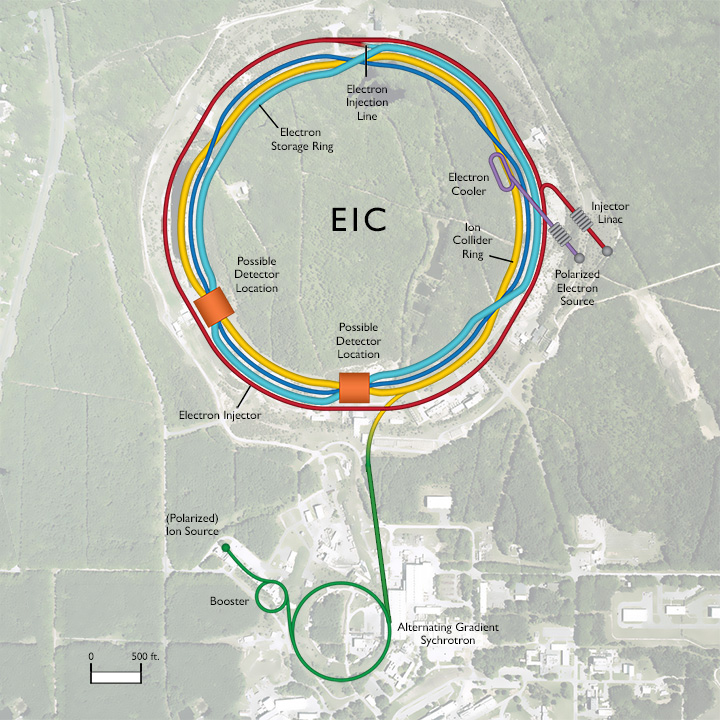The US Department of Energy last week named Brookhaven National Laboratory (BNL) in Long Island, New York, as the site for a particle collider that will enable scientists to conduct research into the forces holding atoms together.
The Electron Ion Collider (EIC), which is expected to cost up to $2.6bn to build, will be designed and built over the next 10 years. Funding will come from the federal government through the DOE Office of Science, drawing on expertise from throughout the US national laboratory complex.
Dan Brouillette, the US energy secretary, commented: “The EIC promises to keep America in the forefront of nuclear physics research and particle accelerator technology, critical components of overall US leadership in science. This facility will deepen our understanding of nature and is expected to be the source of insights ultimately leading to new technology and innovation.”
The facility aims to smash electrons and protons together in order to test theories about the strong nuclear force that holds together the particles that make up atoms. The construction work will add an electron storage ring and electron accelerator to Brookhaven’s existing particle accelerator, known as the Relativistic Heavy Ion Collider, which was completed in 2000.

A plan view of how the ion collider will fit in to the Brookhaven site (Brookhaven/CC BY 2.0)
Brookhaven describes the EIC as a “CT scanner for atoms”. When complete, it will allow scientists to gain knowledge about the arrangement of the quarks and gluons that make up protons and neutrons. Scientists will use data collected from millions of collisions between electrons and protons and a wide range of larger atomic nuclei to study the strong nuclear force and to answer longstanding questions in physics, such as where the proton gets its “spin”.
Brookhaven comments: “The strong force, carried by the gluons, is the strongest and least-understood force in nature-more than 100 times more powerful than the electromagnetic force that governs today’s technologies.
“No one knows for sure where a deeper understanding of the strong force could lead, but knowledge gained through explorations at an EIC could open new opportunities. Understanding the origins of proton spin-currently used in magnetic resonance imaging-may also yield applications derived from this fundamental physics knowledge.”
Top image: A gold ion, as it appears in Brookhaven’s existing ion collider (Brookhaven/CC BY 2.0)
Further reading:






